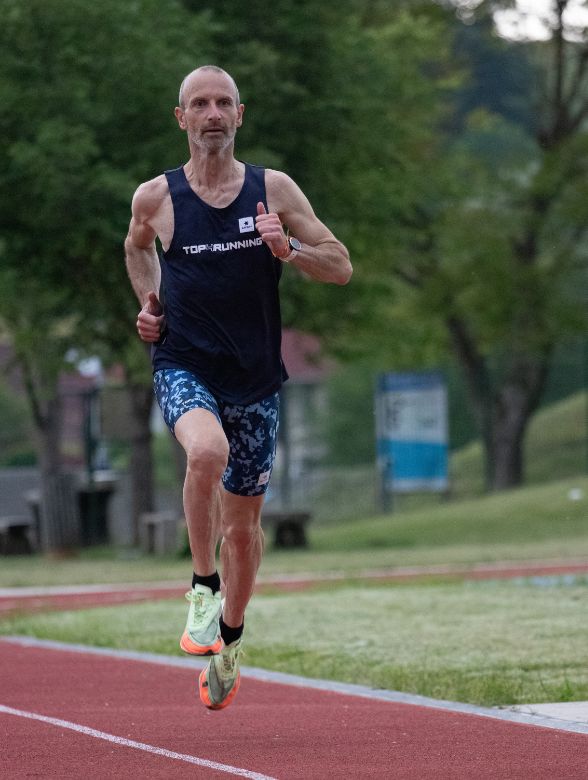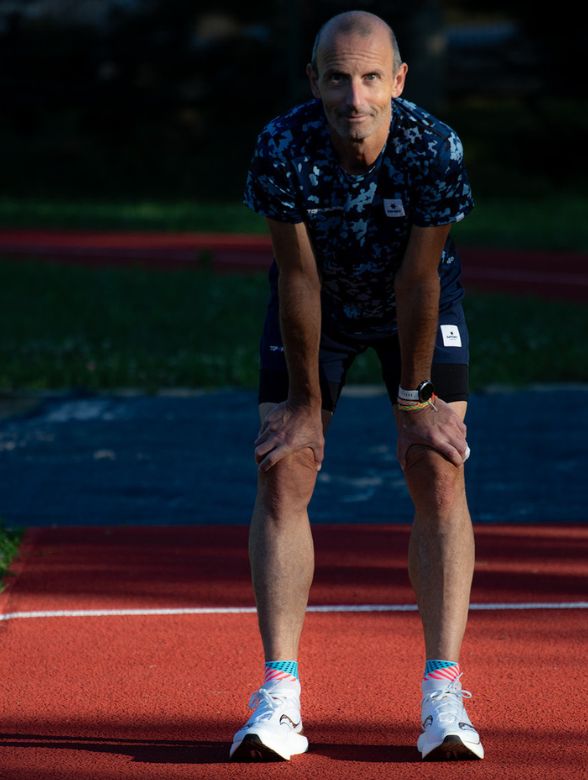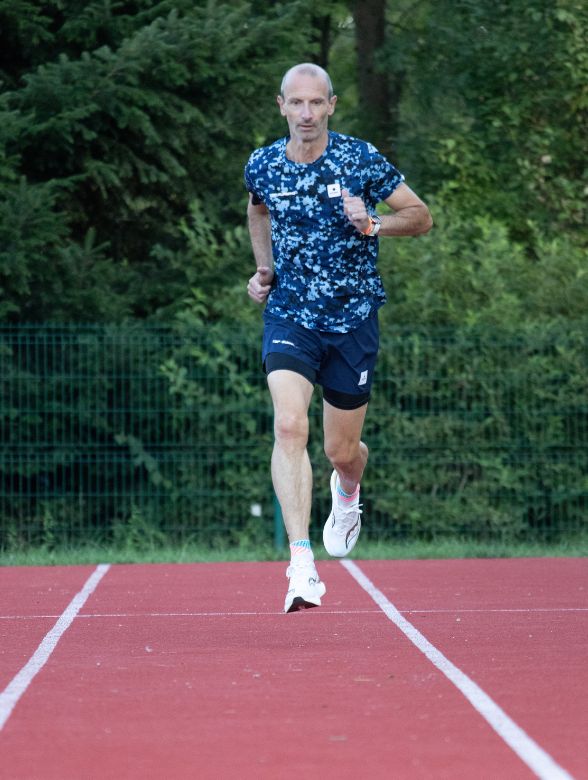Running 5 km in less than 20 minutes is a significant milestone for many runners. However, achieving this goal not only represents a physical challenge, but also tests your mental resilience. You are faced with the task of maintaining an average pace of less than 4 minutes per kilometer.
A successful attempt to run 5 km under 20 minutes requires more than just aerobic fitness. The key is a combination of aerobic and anaerobic training, with an emphasis on strategy for the final attempt. You will most likely have to run faster than your lactate (anaerobic) threshold, which means that due to such intense physical activity, there will be excessive production of lactic acid in the muscles, leading to muscle stiffness.
Your training will consist of training units that are probably already well known to you. The foundation for any longer timed run, including 5 km, is a weekly long run. In addition, however, it is necessary to include track intervals, tempo runs, easy recovery runs, and strength training, although in this article we will focus primarily on the running component.
Training composition and training units
The long run in our plan is scheduled for Sunday, which is most comfortable for most runners, but you can choose another day if you maintain the order of the workouts. The length of the run should be at least 15, ideally 20 kilometers. Monday will be a day for recovery, but you can also include strength exercises. Tuesday is reserved for speed interval training, Wednesday for an easy run, Thursday for a tempo run, Friday for rest, and Saturday again for an easy run.
The overall preparation should last 8 weeks, and before you start, you should be able to run 15 kilometers at a pace of 5:20 min/km, 400 meters at a pace of 3:30 min/km, and 1 kilometer at a pace of 3:50 min/km.
It is important to think through the strategy of the final attempt itself, whether you want to run in a race or are just competing with yourself. Merely maintaining a pace of 3:55 per kilometer may not be enough. It could happen that after 3 or 4 kilometers, you are unable to keep up the pace. It is more effective to start the first 2 to 3 kilometers at a pace of around 4:01 or 4:05 minutes per kilometer, and then accelerate.
Training schedule for sub-20 5K
For the sake of easy plan navigation, let me further explain Tuesday's interval training and Thursday's tempo run.
Tuesdays start with a 2 km warm-up at a comfortable pace with a smooth transition into a 400 m interval. Rest between intervals by walking at ease for the prescribed time with a smooth transition into the next interval. The cool-down at the end is at a comfortable pace.
Thursdays begin with a 2 km warm-up at a comfortable pace followed by a continuous run of 1 or 2 km. After completing the distance at pace, smoothly transition into a cool-down at a lower pace for a set duration. After the time has passed, shift back to a higher pace. The cool-down at the end is again at a comfortable pace as at the start. During Thursday workouts, do not stop.
| Week 1 | Week 2 | Week 3 | Wek 4 | |
|---|---|---|---|---|
| Monday | Rest | Rest | Rest | Rest |
| Tuesday | 2k warmup 6x400m (3:30/km) 2min rest 2k cooldown | 2k warmup 7x400m (3:30/km) 2min rest 2k cooldown | 2k warmup 8x400m (3:30/km) 2min rest 2k cooldown | 2k warmup 6x400m (3:30/km) 1min rest 2k cooldown |
| Wednesday | 6k (5:50/km) | 6k (5:45/km) | 7k (5:50/km) | 7k (5:45/km) |
| Thursday | 2k warmup 3x1k (3:55/km) 1 min easy 2k cooldown | 2k warmup 4x1k (3:55/km) 1 min easy 2k cooldown | 2k warmup 5x1k (3:55/km) 1 min easy 2k cooldown | 2k warmup 4x1k (3:55/km) 30 sec easy 2k cooldown |
| Friday | Rest | Rest | Rest | Rest |
| Saturday | 7k (5:40/km) | 7k (5:30/km) | 9k (5:40/km) | 9k (5:30/km) |
| Sunday | 12k (5:30/km) | 12k (5:25/km) | 14k (5:25/km) | 16k (5:30/km) |
| Week 5 | Week 6 | Week 7 | Week 8 | |
|---|---|---|---|---|
| Monday | Rest | Rest | Rest | Rest |
| Tuesday | 2k warmup 7x400m (3:30/km) 1 min rest 2k cooldown | 2k warmup 8x400m (3:30/km) 1 min rest 2k cooldown | 2k warmup 6x400m (3:30/km) 30 sec rest 2k cooldown | 2k warmup 5x400m (3:30/km) 30 sec rest 2k cooldown |
| Wednesday | 8k (5:50/km) | 8k (5:45/km) | 6k (5:40/km) | 6k (5:50/km) |
| Thurdsday | 2k warmup 5x1k (3:55/km) 30 sec easy 2k cooldown | 2k warmup 2x2k (3:55/km) 30 sec easy 2k cooldown | 2k warmup 3x2k (3:55/km) 30 sec easy 2k cooldown | 2k warmup 3x1k (3:55/km) 1 min easy 2k cooldown |
| Friday | Rest | Rest | Rest | Rest |
| Saturday | 10k (5:40/km) | 10k (5:30/km) | 7k (5:30/km) | 4k (5:50/km) |
| Sunday | 18k (5:30/km) | 18k (5:20/km) | 10k (5:15/km) | D Day |
Nutrition, Hydration, and Recovery
It's important to realize that any continuous preparation will start to "take its toll" after a few weeks. Training affects everyone differently, some more than others. However, to be able to progress in training and adhere to prescribed paces, times, and distances, your body must always have enough energy and begin to recover after training.
Therefore, ensure adequate intake of carbohydrates and proteins. Depending on your diet, try to maintain a carbohydrate intake of at least 5 g/kg of body weight per day and observe if you feel tired during workouts. If so, increase your carbohydrate intake. For proteins, stick to the standard 1.2 - 1.4 g/kg of body weight per day.
If you know you won't get enough protein from your regular diet, we recommend trying hyve clear whey isolate. This is a protein with natural ingredients, which does not have the typical milky taste, is very quickly and easily digested, and refreshes wonderfully after training with its fruity taste (lemon-pineapple or lime). We developed this protein specifically for runners and cyclists for post-workout protein intake. For those who prefer classic milk protein, we offer hyve wpc 80. This is a protein without artificial sweeteners and thickeners, with perfect digestibility and nutritional properties.
Don't forget to replenish the 4 basic minerals that you will lose in sweat in large amounts - Sodium, Magnesium, Potassium, and Calcium. I recommend reading an article about what electrolytes are and their function.
Also, feel free to join our running club, hyve running on Strava, where I'm happy to answer any questions. Alternatively, contact me on Instagram or visit my webpage which is a home to runners from around the world. We can work together on creating a personalized plan for any distance that will reflect your exact needs.



 CZK
CZK
 EUR
EUR
 EUR
EUR







